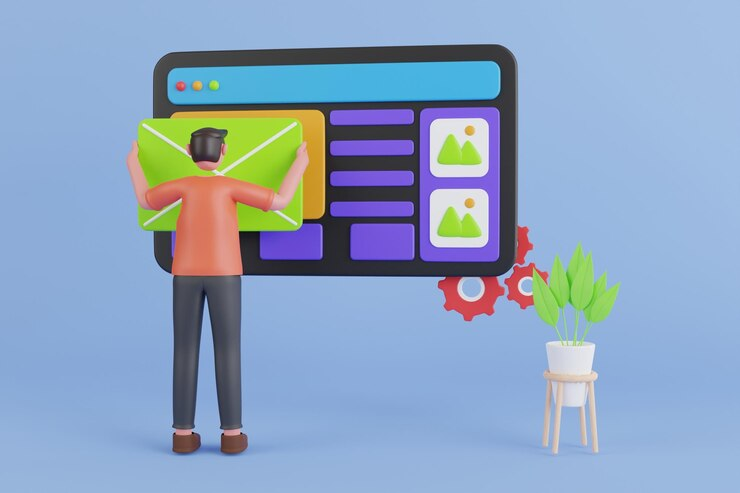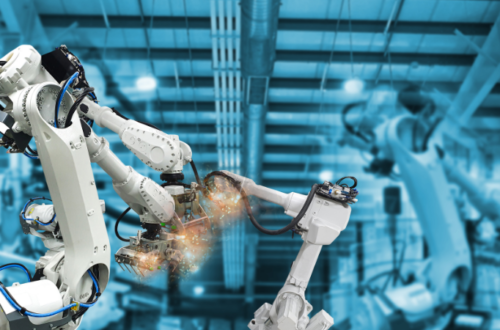In today’s fast-paced digital age, user manuals are no longer confined to the static printed booklets that accompany products. Instead, they are evolving into dynamic, interactive digital experiences powered by 3D animation. These interactive manuals, driven by advanced 3D animation services, not only enhance user engagement but also ensure a more intuitive, efficient, and visually appealing way to learn how products work.
This blog delves deep into how 3D animation is transforming user manuals, the benefits of interactive digital manuals, and how businesses can harness this technology. Throughout the discussion, we will focus on the role of 3D animation services and the integration of 3D animated logos as part of the overall brand experience.
1. The Shift Toward Interactive User Manuals
User manuals have always played a vital role in guiding customers on how to use products effectively. Traditionally, they were printed documents, often filled with complex instructions, difficult-to-understand diagrams, and technical jargon. In many cases, these manuals frustrated users, causing them to ignore the instructions altogether.
With advancements in digital technology, we are now witnessing a shift toward interactive user manuals that incorporate 3D animations. These digital guides not only help explain how a product works but also allow users to interact with animated visuals in real time. Whether it’s assembling furniture, using a new piece of software, or learning the features of a gadget, interactive 3D manuals make it easier to understand complex processes without sifting through pages of text.
2. The Role of 3D Animation in User Manuals
3D animation services play a critical role in creating these interactive manuals. By producing high-quality, lifelike animations, 3D animation allows companies to visually demonstrate how their products operate. These animations are more than just moving graphics; they are designed to showcase intricate details, complex mechanisms, and step-by-step processes in a manner that static images or text simply cannot match.
For example, in an interactive manual for a smartphone, 3D animations could demonstrate how to install a SIM card, set up facial recognition, or enable specific features. Users can rotate the virtual device, zoom in to see more details, or click on specific parts to access additional instructions, creating an immersive learning experience.
3. Enhancing Clarity and Reducing Misunderstanding
One of the main benefits of using 3D animation services in user manuals is the clarity it brings. Visual explanations through animation significantly reduce misunderstandings and confusion, especially for products that require complex assembly or have intricate functionality. Instead of relying on users to interpret diagrams or long paragraphs of text, companies can show, in a step-by-step manner, exactly how a task should be performed.
For example, consider an interactive manual for assembling furniture. Using 3D animation, the manual can guide the user through the process with precise, real-time instructions, showing how each part fits together. Users can see animated bolts and screws in motion, zoom in to understand the exact alignment, and even interact with the model to view it from different angles. This reduces the likelihood of errors during assembly, saving time and frustration.
4. Customization and Personalization of User Experience
Another advantage of interactive user manuals that use 3D animation services is the ability to customize and personalize the user experience. Not all users need the same level of detail or guidance. Some may be beginners who need a thorough explanation, while others may be experienced users who only need quick reference information.
With an interactive manual, users can tailor their experience by selecting the level of detail they require. For instance, they might choose between “beginner” and “advanced” modes or select specific features of the product they want to explore. The manual could include interactive 3D modules where users can focus on particular components or functions.
Furthermore, the integration of 3D animated logos within these manuals can also enhance brand recognition. By incorporating branded animations into the user experience, companies can reinforce their identity and create a cohesive digital experience that aligns with the overall brand design.
5. The Immersive Power of Augmented Reality (AR) Integration
One of the most exciting developments in the realm of interactive 3D user manuals is the integration of augmented reality (AR). AR enhances the user experience by overlaying 3D animations onto the real world, making it possible for users to visualize products and instructions as though they were right in front of them.
For example, a 3D animated user manual for a home appliance could allow users to scan their device with a smartphone or tablet, triggering AR animations that demonstrate how to operate the device in real-time. The animation would overlay instructions directly onto the physical product, making it easier for users to follow along without needing to switch back and forth between the device and the instructions.
6. Improved Accessibility and Reach
Interactive 3D user manuals are not just visually engaging; they are also more accessible. By providing users with dynamic, intuitive visual guides, companies make it easier for people with varying levels of literacy, language proficiency, or cognitive abilities to understand product instructions. Additionally, 3D animations are universally understandable, transcending language barriers and making these manuals accessible to a global audience.
Moreover, these digital manuals are available across multiple platforms—web, mobile, and desktop—ensuring that users can access them whenever and wherever they need assistance. Whether someone is using a tablet, smartphone, or laptop, interactive 3D manuals offer the flexibility and accessibility that traditional manuals simply cannot match.
7. Cost Savings and Sustainability
From a business perspective, adopting interactive 3D user manuals can result in significant cost savings. Printed manuals often require frequent updates and revisions, leading to high production costs. In contrast, digital manuals can be easily updated, reducing the need for reprints and cutting down on material and distribution expenses.
Furthermore, creating interactive manuals using 3D animation services contributes to sustainability efforts. By shifting away from printed materials, companies can reduce their environmental impact. This not only aligns with eco-friendly practices but also appeals to a growing consumer base that values sustainability.
8. Engaging Customers Beyond the Manual
The benefits of interactive 3D manuals extend beyond just providing product instructions. These digital tools serve as touchpoints for ongoing customer engagement. As users interact with the manual, they can be presented with additional content, such as tutorials, troubleshooting tips, or promotional offers. This ongoing interaction helps build brand loyalty and reinforces the company’s commitment to providing excellent customer service.
Additionally, businesses can incorporate their 3D animated logo within the manuals to reinforce brand identity. A logo animation at the beginning of the manual can serve as a professional and memorable introduction, while subtle brand animations throughout the experience can keep the brand top of mind. These animations help strengthen the overall user experience and create a seamless connection between the product and the brand.
9. Industries Benefiting from 3D Animation in User Manuals
Several industries are reaping the rewards of using interactive user manuals powered by 3D animation services:
- Electronics and Gadgets: From smartphones to home appliances, companies are using 3D animations to visually demonstrate the features and functionality of their products.
- Automotive: 3D animations can be used to explain the inner workings of a car, showing users how to perform maintenance tasks or use advanced features.
- Medical Devices: In the healthcare sector, interactive 3D manuals are helping professionals and patients understand complex medical equipment and procedures.
- Furniture and Home Goods: Interactive 3D manuals simplify the assembly process for flat-pack furniture, making it easier for customers to put together their purchases without frustration.
10. Future of Interactive User Manuals: Virtual Reality (VR) and Beyond
Looking forward, the future of interactive user manuals lies in immersive technologies such as virtual reality (VR). With VR, users can step into a fully immersive environment where they interact with 3D models of the products in real-time. Imagine being able to assemble a product virtually before attempting it in real life, or exploring all the features of a new gadget in a fully interactive 3D space.
By leveraging 3D animation services, companies can create even more engaging and immersive user experiences that take product education to the next level. As technologies continue to evolve, the potential for creating richer, more interactive user manuals will only grow.
Conclusion
Interactive user manuals powered by 3D animation services represent the future of product instruction. These digital tools offer a visually engaging, immersive, and intuitive way for users to understand and interact with products, reducing confusion and enhancing the overall user experience. As more companies adopt this technology, they will not only improve customer satisfaction but also strengthen their brand presence through the strategic use of 3D animated logos and other branded content.
By embracing 3D animation for user manuals, businesses can streamline product education, foster better customer engagement, and ultimately differentiate themselves in an increasingly competitive market.





